It's Time To Sit Back And Watch It Grow Or Pick And Eat...
It's May and the veggies are coming along quite nicely. It seems they really pick up speed as the days get longer!

A view from our roof
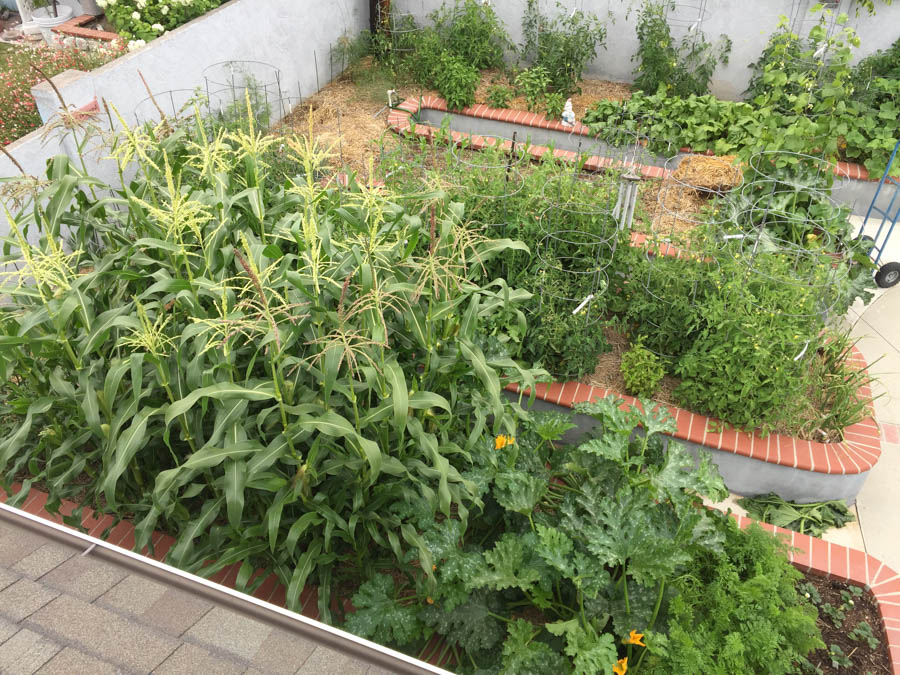
Each bed is 25' by 4'

A view from above

The garden from the roof

The Back Yard
We have about 600 square feet of actual garden in our back yard (tillable dirt). With the redesign, we get as much from the garden as we did before the walk-around raised-bed design! It's a lot easier on the back!


The zucchini seem to pop right up and grow huge overnight! Paul tried pickling some zucchini slices as we have so many!

Sometimes we miss picking one and it gets huge... The colors help hide them

Just before picking
Did You Know?
1. One zucchini has just 25 calories (compared to a baked potato, for example, which has 130 calories).
2. The flower of the zucchini plant is also edible. (If you dare.)
3. The world's largest zucchini on record was 69 1/2 inches long, and weighed 65 lbs. Bernard Lavery of Plymouth Devon, UK, grew the humongous veggie.
4. According to World's Healthiest Foods Nutrition info, nutrients and vitamins found in zucchini can help prevent cancer and heart disease.
5. A soap bar called Fresh Zucchini Flower Big Bar Goat's Milk Soap (rolls off the tongue, no?) is made with real zucchini.
6. A zucchini has more potassium than a banana.
7. The word zucchini comes from 'zucca' the Italian word for squash.

We planted some additional strawberries to make sure we do not run out

Another 2-3 weeks and these little guys will be producing like mad!
Did You Know?
- Strawberries are the only fruit with seeds on the outside.
- The average strawberry has 200 seeds
- Strawberries are low fat, low calorie; high in vitamin C, fiber, folic acid, potassium
- Strawberries, as part of a 5 a day fruit & vegetable program, can help reduce the risk of cancer & heart attacks
- Americans eat 3.4 pounds of fresh strawberries each year plus another 1.8 pounds frozen per capita
- Strawberries are the first fruit to ripen in the spring
- There is a museum in Belgium just for strawberries
- Strawberries are a member of the rose family
- In medieval times, strawberries were served at important functions to bring peace & prosperity.
- Folk lore states that if you split a double strawberry in half and share it with the opposite sex, you'll soon fall in love
- Birds are responsible for distributing strawberry seeds everywhere.
- Strawberries are indigenous to every continent except New Zealand, Australia, and Africa.
- Not every single flower will produce a strawberry.
- A strawberry will not ripen once it is picked.
- Strawberries do not grow from seeds. Instead, they reproduce with long shoots of new growth.
- California produces over one billion berries annually. Laying them side-by-side would allow them to circle the earth several times.

Transplanted beets! They look a little worse for wear but they come right out of it!
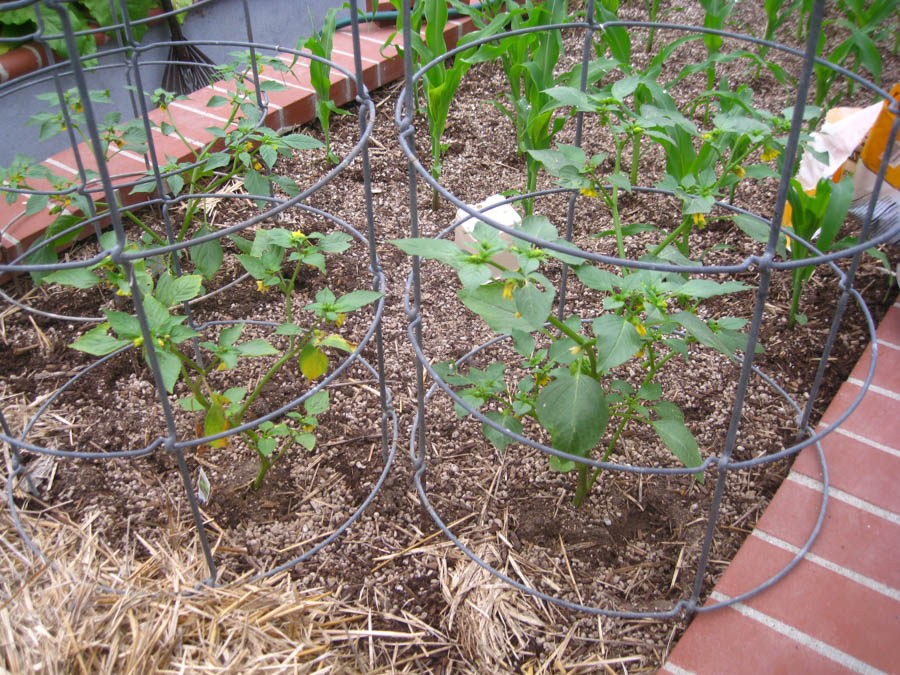
The tomatillos are looking good... We see great sauces in our future

Round two of the corn season... They are babies

Some of our asparagus are coming up... We lost several plants due
to all the water we had during the winter storms.


The tomatoes are going wild!

The tomatoes are easy to get to with the raised flower/vegetable beds!

We have 30 different kinds of tomatoes planted this year!

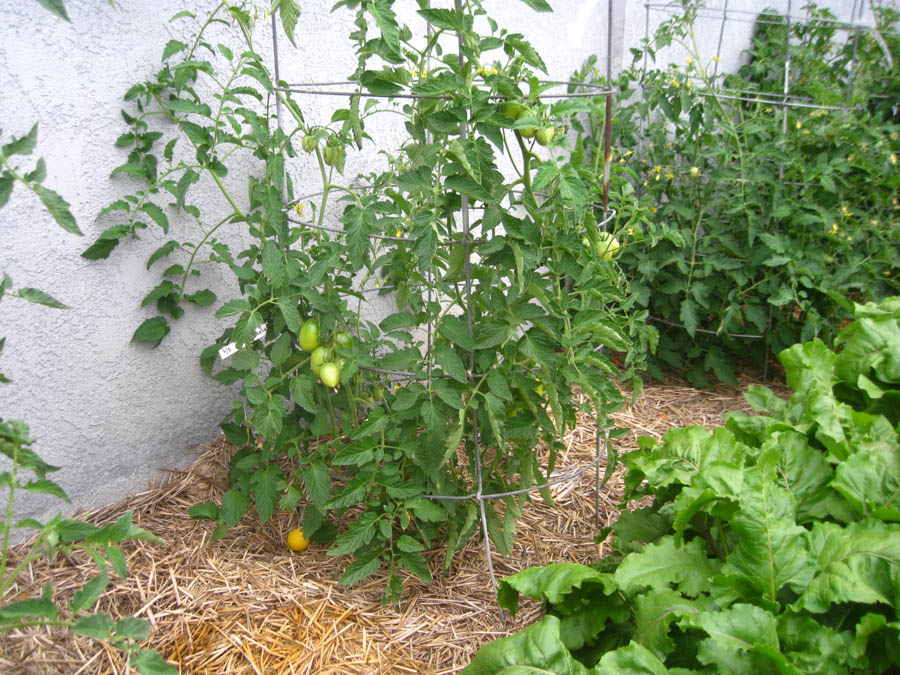
Tomatoes in the back and beets in the front

The string beans are coming!

Baby green beans
just being born

We have three types of cucumbers this year

They are doing quite well!

For breakfast this morning

The eggplants are forming the fruit as we speak!

The blueberries are LOADED with fruit! We have fresh blueberries all the time
and we enjoy having Logan and Clark come pick the berries!

Paul is getting old... The hand cart is used more and more these days! 100 pound
bales of straw are moved easily this way!

Yes indeed.... Carrots are coming up nicely.

They are quite well behaved and are easily taught to dance!

It is so easy to walk between the plants and pick/pull/admire!

Almost as high as an elephants eye!
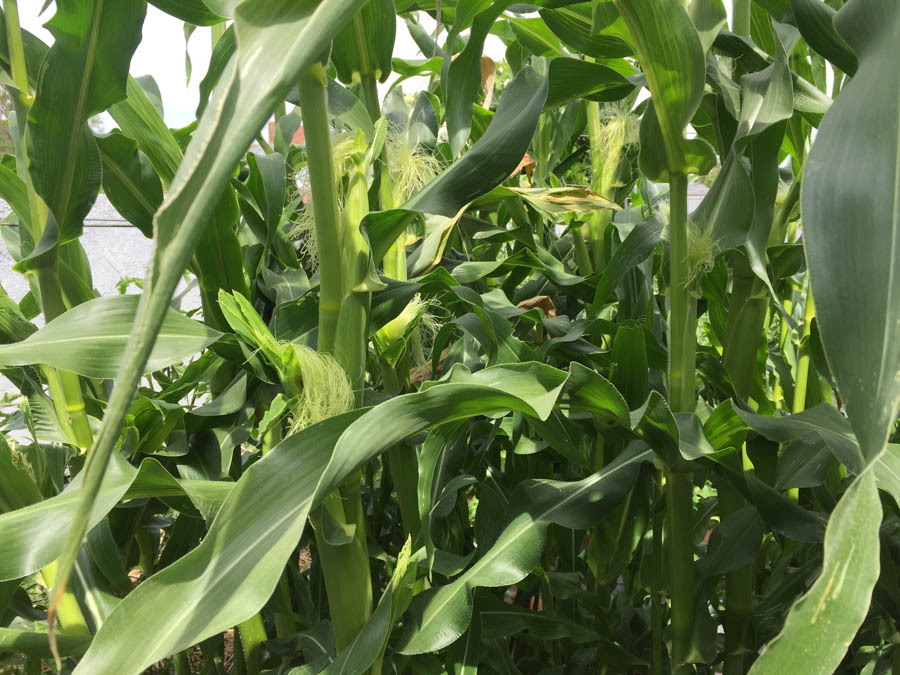
The corn is beginning to show!

The girls have released their silks! It's almost time to get it on!

The pollen is on the tassels which have to fall on the silks

As high as the roof!
(
See more about corn
)

As Logan says (next door neighbors grandson) - "Boo Berries"

A months supply right there!

See the cucumbers forming?

We gots tomatoes
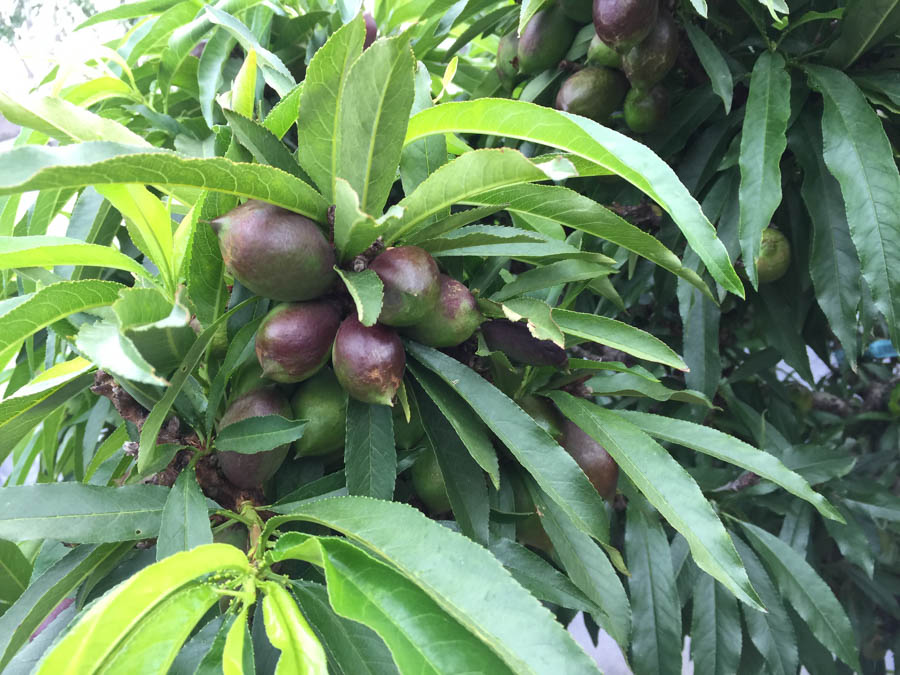
Nectarines

Bet we have 200 nectarines on the tree
Did You Know?
A nectarine is a fuzzless variety of peach. It is NOT a cross between a peach and a plum.
Nectarines, like peaches, probably originated in China over 2,000 years ago and were cultivated in ancient Persia, Greece and Rome. They were grown in Great Britain in the late 16th or early 17th centuries, and were introduced to America by the Spanish.
The word 'nectarine' means sweet as nectar, and this is very likely the obvious origin of the name.
Today, California grows over 95% of the nectarines produced in the United States.
Peach seeds may occasionally grow into trees that bear nectarines, and nectarine seeds may grow into trees that bear either nectarines or peaches. It is not possible to know which fruit will grow on trees grown from nectarine seeds, so nectarine branches are grafted onto peach trees to guarantee a crop of nectarines.

The new apple tree is loaded also!

Baby avocados... The tree is only two years old... Just wait!

Figs are coming on strong!

Oodles awaiting another month of sunshine!
The Front Yard Is Also Busy!
We garden everywhere there is available dirt! The passers by enjoy several of our fruit trees and in fact we had to put another apple in the back yard so we would have some!


Down the driveway we have Artichokes, potatoes, bush beans, and grapes

The bush beans are beginning to produce and they produce every day!
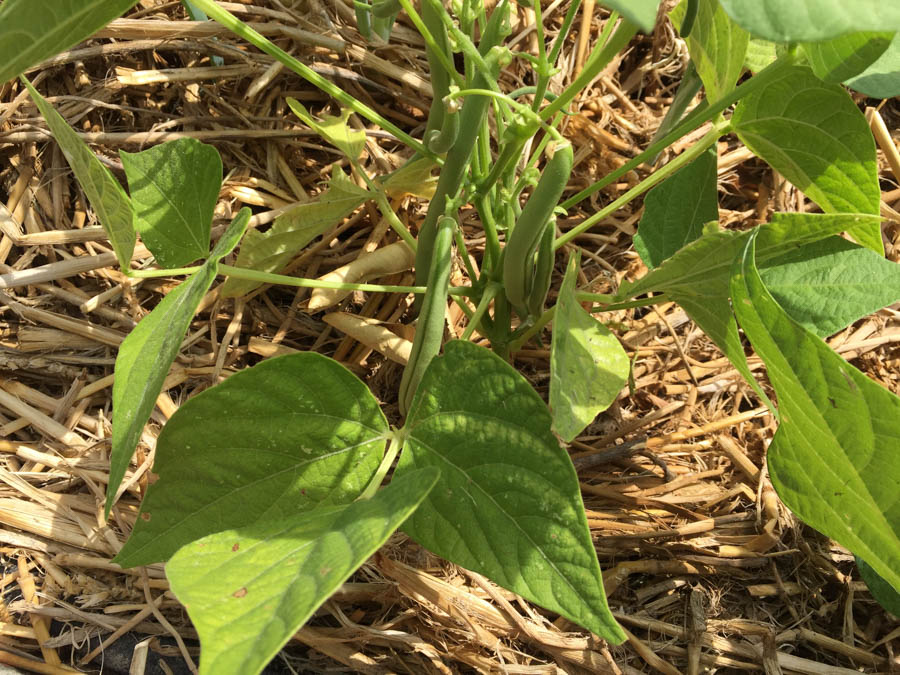
Look carefully to see them!

The straw mulch keeps the ground cool and moist
Did You Know? - Flatulence? Many edible beans, including broad beans and soybeans, contain oligosaccharides (particularly raffinose and stachyose), a type of sugar molecule also found in cabbage. An anti-oligosaccharide enzyme is necessary to properly digest these sugar molecules. As a normal human digestive tract does not contain any anti-oligosaccharide enzymes, consumed oligosaccharides are typically digested by bacteria in the large intestine. This digestion process produces flatulence-causing gases as a byproduct. Since sugar dissolves in water, another method of reducing flatulence associated with eating beans is to drain the water in which the beans have been cooked.
Some species of mold produce alpha-galactosidase, an anti-oligosaccharide enzyme, which humans can take to facilitate digestion of oligosaccharides in the small intestine. This enzyme, currently sold in the United States under the brand-names Beano and Gas-X Prevention, can be added to food or consumed separately. In many cuisines beans are cooked along with natural carminatives such as anise seeds, coriander seeds and cumin[citation needed].
One effective strategy is to soak beans in alkaline (baking soda) water overnight before rinsing thoroughly. Sometimes vinegar is added, but only after the beans are cooked as vinegar interferes with the beans' softening.

Coming soon to our basket!

The plums are beginning to take shape
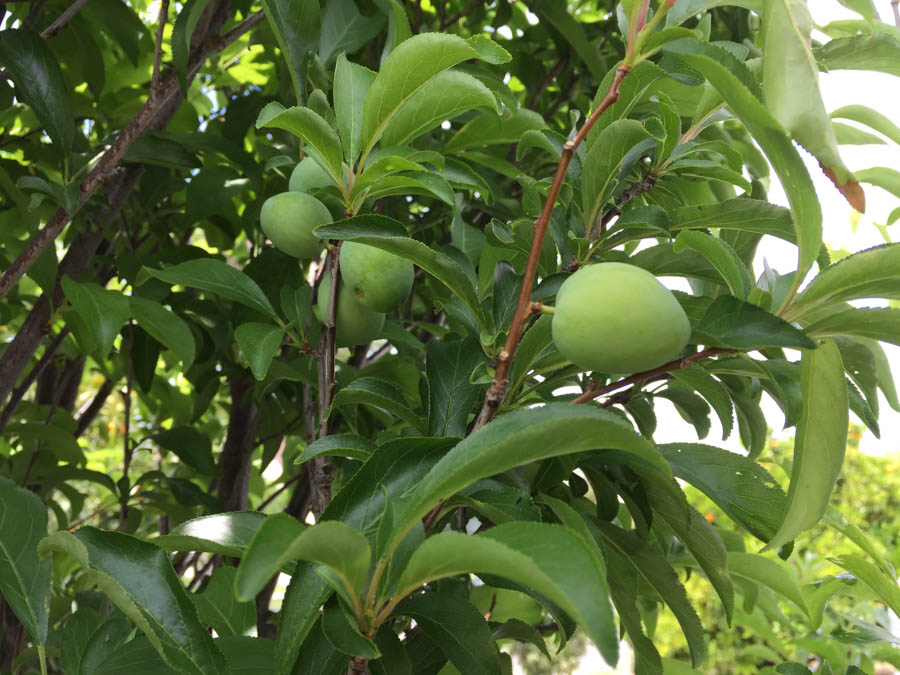
They are hard to find amongst the leaves

Another few weeks!
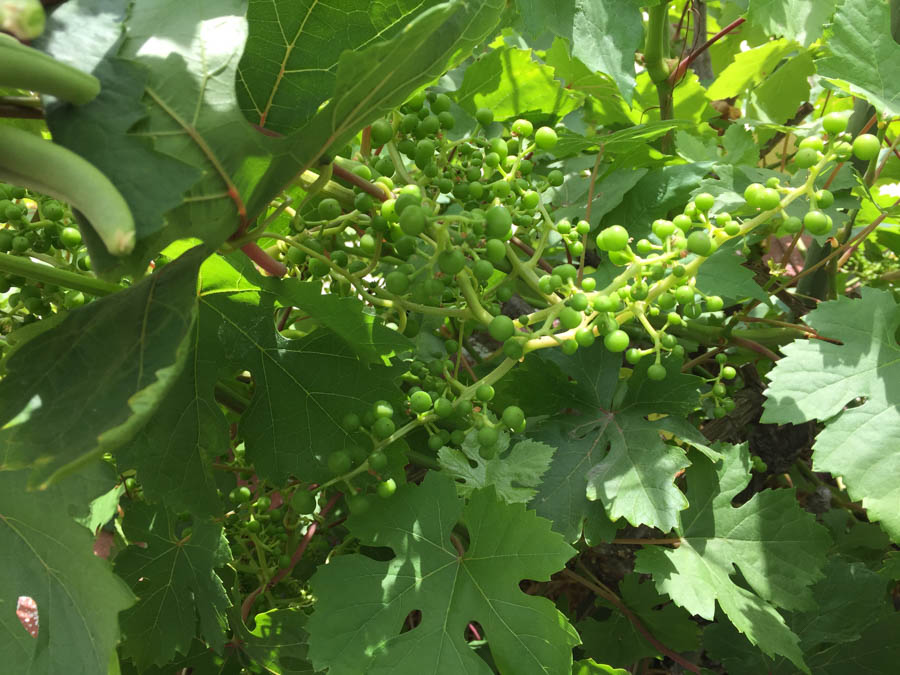
These are grapes... Not tiny plums

The apples are taking shape

Plum tree #2 is on the street and it is also doing well

Potato plants are coming up.... When they turn drown, it will be time to dig for potatoes
Did You Know?
- The average American eats approximately 126 pounds of potatoes each year.
- The potato is a relative of tobacco and the tomato.
- Potatoes require less water to grow than other staple foods such as wheat, rice and corn.
- Up until the late 18th century, the French believed that potatoes caused leprosy.
- The potato is the fourth most important crop in the world after wheat, rice and corn.
- Marie Antoinette wife of Louis XV was known to wear potato blossoms as a hair decoration.
- It is most likely that all of Europe's potato crop in the 1800s originated from only 2 plants brought back to Europe by the Spaniards. This lack of genetic diversity is one of the probable causes of the devastating potato blight of the late 19th century.
- The first permanent potato patches in North America were established in 1719, most likely near Londonderry (Derry), New Hampshire.
- The 'Idaho' potato or 'Russet Burbank' potato was developed by Luther Burbank (1849-1926) in 1871.

We put onions everywhere!

Strawberries are so good right off the plant

Inside the fence we have artichokes and tomatoes

The pomegranate tree is loaded with fruit this year

Must keep it evenly watered

On the north wall we have two tomatoes and a Japanese grape

We calls it "Grandpa's Garden"
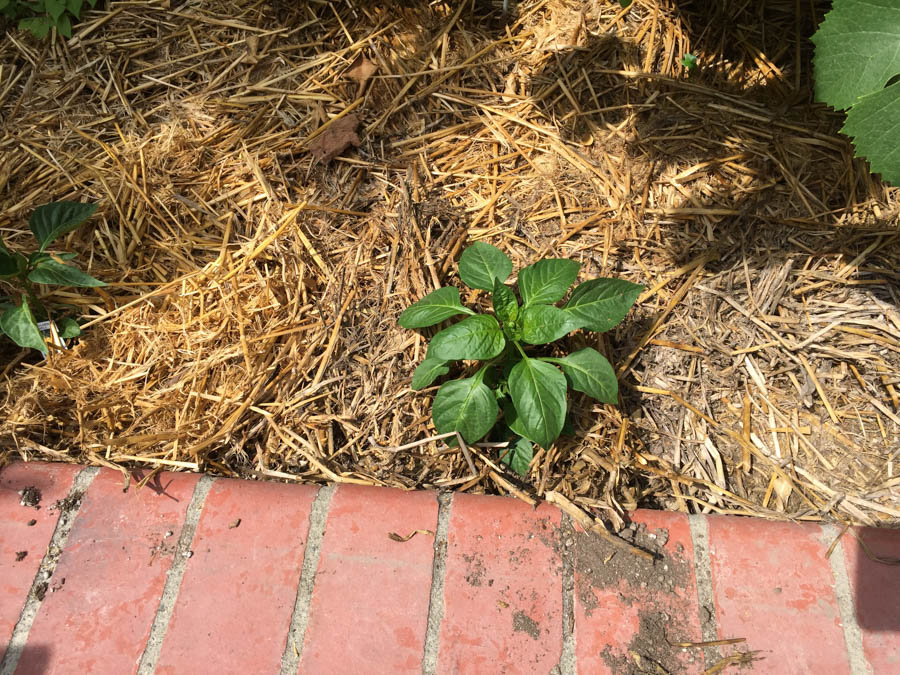
Bell Peppers do well in this location

Typically we grow Basil, Chives, Cilantro, Dill, Garlic, Marjoram, Mints, Parsley, Oregano, Rosemary, Savory (Summer), and Thyme
Did You Know? - In general use, herbs are any plants used for food, flavoring, medicine, or fragrances for their savory or aromatic properties. Culinary use typically distinguishes herbs from spices.

Dill and Rosemary

Sage

Basil and Cilantro
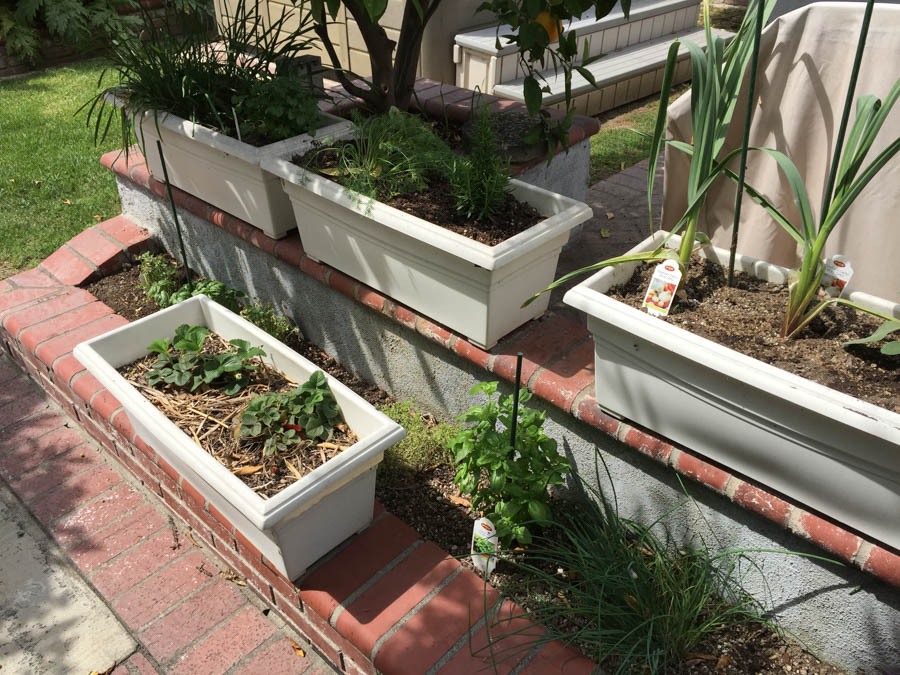
Garlic more Strawberries

Lettuce and Sage

Lemon grass

Lemons galore!

We see a lemonade stand in our future!

